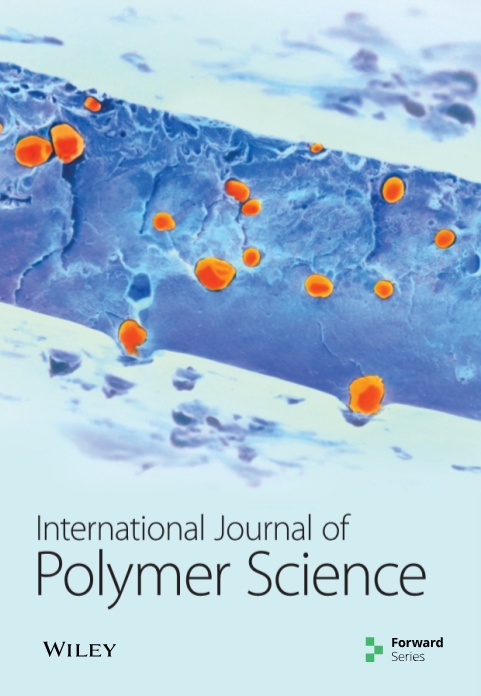Design of Polymer-Based Trigate Nanoscale FinFET for the Implementation of Two-Stage Operational Amplifier
IF 4.4
4区 化学
Q2 POLYMER SCIENCE
引用次数: 4
Abstract
The major motivation behind transistor scaling is the requirement for high-speed transistors with lower fabrication costs. When the fin thickness or breadth is smaller than 10 nm in a trigate FET, charges travel in a nonconfined fashion, resulting in the creation of energy subbands and causing volume inversion. In comparison to the carrier near a surface inversion layer, volume inversion experiences less interface scattering. In large-scale integrations, we have focused on developing a 3D model for surface potential by establishing the three-dimensional Poison’s equation and building a unique fin field-effect transistor (FinFET) structure. In this context, there is a growing interest in developing a low-cost, simple solution that combines plastic (polymer) as a substrate and organic materials to create electronics such as monitors and sensors. The research examines characteristics such as silicon width, oxide thickness, doping concentration, metal work-function about gate, and various surface potentials. For different circuit configurations, it also examines the DC and AC characteristics of the FinFET structure. A differential amplifier is built for RF application based on the device specifications. This work is aimed at improving the semiconductor design structure by adjusting device parameters, analyzing the results, establishing the best FinFET device preferences, and selecting an application for the optimized device. The 3D Poisson’s equation may be used to create an analytical model of a trigate nanosize FinFET, which can then be tested using a TCAD simulator. By constructing such a FinFET, we can structure and analyze various electrostatic parameters. To facilitate the creation of FinFET-based circuits, including product development, a novel transistor needs a creative device basis. The infrastructure’s support denotes a computationally advantageous numerical model that accurately depicts a FinFET. The work presents a compact model for semiconductor manufacturing that permits separate IC productions while achieving higher levels of excellence and using less power. The design outperforms the CMOS by 22.7% in gain, 31.48% in power consumption, and 12.72% in CMRR, while operating at a 5 GHz unity gain frequency.用于实现两级运算放大器的基于聚合物的三极管纳米FinFET的设计
晶体管缩放背后的主要动机是对具有较低制造成本的高速晶体管的需求。当翅片厚度或宽度小于10 纳米,电荷以非精细的方式传播,导致能量子带的产生并导致体积反转。与表面反演层附近的载流子相比,体积反演经历较少的界面散射。在大规模集成中,我们专注于通过建立三维Poison方程和构建独特的鳍型场效应晶体管(FinFET)结构来开发表面电势的3D模型。在这种情况下,人们对开发一种低成本、简单的解决方案越来越感兴趣,该解决方案将塑料(聚合物)作为基底和有机材料相结合,以制造显示器和传感器等电子产品。该研究考察了硅宽度、氧化物厚度、掺杂浓度、栅极金属功函数和各种表面电势等特性。对于不同的电路配置,它还检查了FinFET结构的直流和交流特性。差分放大器是根据设备规格为射频应用而构建的。这项工作旨在通过调整器件参数、分析结果、建立最佳FinFET器件偏好以及为优化的器件选择应用来改进半导体设计结构。3D泊松方程可用于创建三栅极纳米尺寸FinFET的分析模型,然后可使用TCAD模拟器对其进行测试。通过构造这样的FinFET,我们可以构造和分析各种静电参数。为了促进基于FinFET的电路的创建,包括产品开发,新型晶体管需要创造性的器件基础。基础设施的支持表示一个计算上有利的数值模型,该模型准确地描述了FinFET。这项工作为半导体制造提供了一个紧凑的模型,允许单独的IC生产,同时实现更高水平的卓越性和更低的功耗。该设计在增益方面优于CMOS 22.7%,功耗方面优于CMOS 31.48%,CMRR方面优于CMOS 12.72%,同时工作在5 GHz单位增益频率。
本文章由计算机程序翻译,如有差异,请以英文原文为准。
求助全文
约1分钟内获得全文
求助全文
来源期刊

International Journal of Polymer Science
POLYMER SCIENCE-
CiteScore
6.10
自引率
0.00%
发文量
55
审稿时长
>12 weeks
期刊介绍:
The International Journal of Polymer Science is a peer-reviewed, Open Access journal that publishes original research articles as well as review articles on the chemistry and physics of macromolecules.
 求助内容:
求助内容: 应助结果提醒方式:
应助结果提醒方式:


